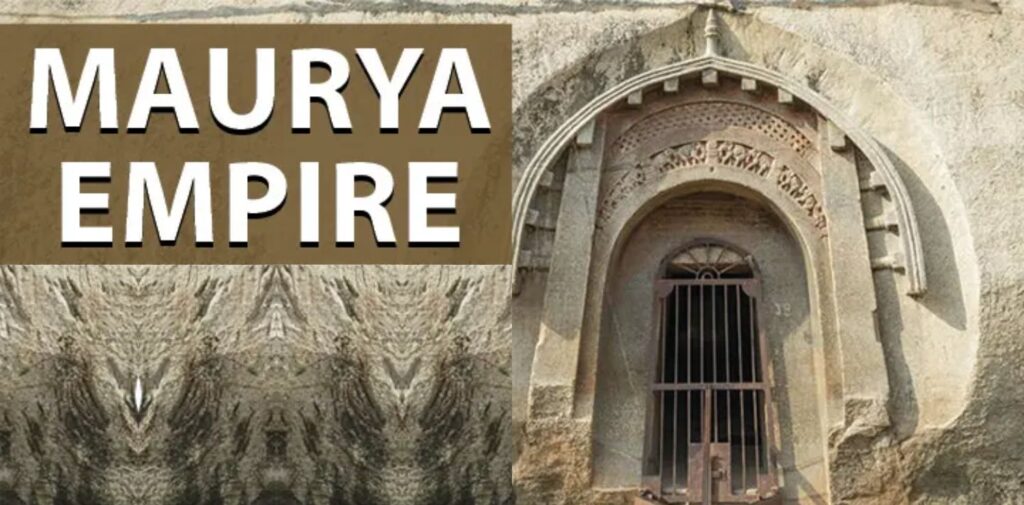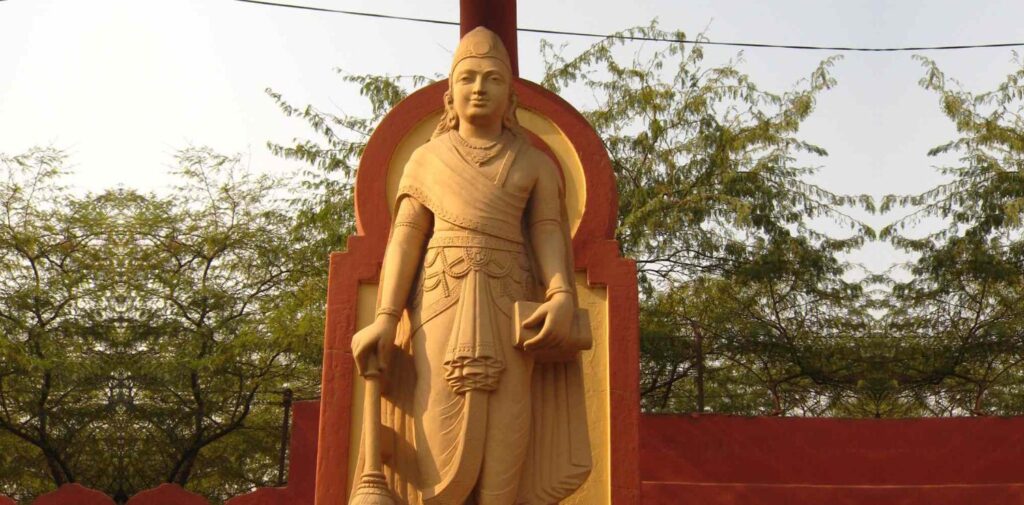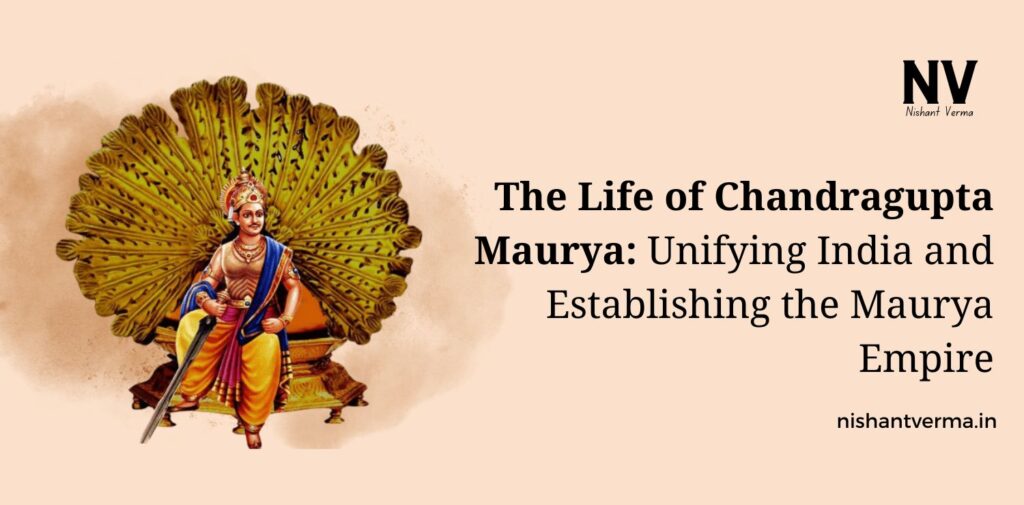Chandragupta Maurya is one of the most remarkable figures in Indian history. His rise from humble beginnings to founding one of the largest and most powerful empires in ancient India is a tale of ambition, determination, and strategy. His establishment of the Maurya Empire laid the foundation for a united Indian subcontinent, shaping the history and culture of the region for centuries.
In this article, we will explore the life of Chandragupta Maurya, his journey to power, and the creation of the Maurya Empire. By the end, you’ll have a complete understanding of how this extraordinary ruler transformed India.
Early Life of Chandragupta Maurya
Chandragupta Maurya was born around 340 BCE in a small village in present-day Bihar, India. The exact details of his early life are unclear, but it is widely believed that he came from a humble, perhaps even lower, caste background. Some historical sources suggest that his father may have been a member of the Maurya dynasty, while others believe he was from a poor family, possibly of mixed heritage.
Despite his modest beginnings, Chandragupta’s remarkable intelligence and leadership skills were apparent from a young age. According to ancient texts, he was a student of the great teacher and philosopher, Chanakya (also known as Kautilya). Chanakya was a learned Brahmin who saw great potential in the young Chandragupta and took him under his wing, mentoring him in the art of governance, warfare, and statecraft.
Chanakya’s influence on Chandragupta’s early life was profound. He taught him the importance of strategy, political cunning, and the significance of strong leadership. These lessons would later prove crucial in Chandragupta’s rise to power and the establishment of the Maurya Empire.

The Rise to Power
At the time of Chandragupta’s youth, India was divided into several small kingdoms and republics. The powerful Nanda dynasty ruled over the northern part of India, but their reign was marked by corruption and misrule. Many regions, including parts of northern India, were unstable and lacked strong central control.
Chanakya, seeing an opportunity, decided to overthrow the Nanda dynasty and place Chandragupta on the throne. Together, they began to build an army capable of challenging the Nandas. Chanakya’s political acumen and Chandragupta’s military leadership proved to be a formidable combination. With Chanakya’s guidance, Chandragupta gathered a group of loyal followers and started campaigning against the Nanda rulers.
After a series of tactical victories, Chandragupta and his forces successfully overthrew the Nanda dynasty. In 321 BCE, Chandragupta Maurya became the ruler of the Magadha region, located in present-day Bihar, and laid the foundation for what would later become the Maurya Empire.

Establishing the Maurya Empire
Once Chandragupta came to power, he set about consolidating his authority and expanding his kingdom. The first major challenge he faced was the presence of external threats, particularly from the Macedonian Empire, which had been established by Alexander the Great in the north-western part of India.
Confronting Alexander’s Successors
Alexander the Great’s invasion of India in the 4th century BCE had left a significant mark on the region. After his death, his empire in the north-western parts of India was divided among his generals. Chandragupta’s early victories against these Greek rulers played a critical role in the unification of India.
The Macedonian generals, known as the Seleucids, controlled parts of modern-day Afghanistan and Pakistan. In 305 BCE, Chandragupta Maurya confronted Seleucus I Nicator, one of Alexander’s successors. After a series of battles, the two sides reached a peace agreement in which Chandragupta agreed to give up certain territories in exchange for a marriage alliance and a substantial gift of war elephants. This agreement strengthened Chandragupta’s position, allowed him to expand his territories, and established diplomatic relations with the Hellenistic world.
Unifying India
Chandragupta’s military campaigns and political alliances enabled him to expand his rule over much of northern and central India. He eventually united most of the Indian subcontinent under one rule, from the Gangetic plains in the east to the north-western regions near modern-day Afghanistan and Pakistan.
By the time Chandragupta’s reign reached its height, he had created a vast empire, which included modern-day states such as Bihar, Uttar Pradesh, Punjab, Rajasthan, and Madhya Pradesh. The Maurya Empire’s capital was Pataliputra (modern-day Patna), a prosperous city on the banks of the Ganges River. It became the center of administration, culture, and commerce in ancient India.
Governance and Administration
Chandragupta Maurya’s governance was highly organized and efficient. One of the key features of his rule was his emphasis on a well-structured bureaucracy and a strong central administration. He divided his empire into provinces, each headed by a governor who was responsible for maintaining law and order, collecting taxes, and ensuring that the emperor’s decrees were enforced.
The empire’s administrative system was based on a detailed set of rules and procedures, which were outlined by Chanakya in his famous work, the Arthashastra. The Arthashastra is a treatise on statecraft, economic policy, and military strategy. It provided Chandragupta with guidelines for managing his empire, ensuring stability, and safeguarding his reign from internal and external threats.
Chandragupta’s rule was also marked by the construction of a vast network of roads, forts, and irrigation systems that helped facilitate trade and communication across the empire. This infrastructure played a significant role in the prosperity of the Maurya Empire.

The Role of Chanakya
Chanakya, the mastermind behind Chandragupta’s rise to power, remained a close advisor throughout his reign. The relationship between the two was one of mutual respect, with Chanakya providing political and military advice, while Chandragupta focused on governance and empire-building.
Chanakya’s wisdom and influence extended beyond politics. He is also credited with establishing one of the earliest schools of political science and economics, which influenced not only India but also various parts of the world. His work, the Arthashastra, remains a crucial text on governance and is studied even today.
The Decline of Chandragupta’s Rule
In the later years of his life, Chandragupta gradually retired from active rule. Around 297 BCE, he abdicated the throne in favor of his son, Bindusara. According to some accounts, Chandragupta renounced the throne and became a follower of Jainism, a religion that emphasizes non-violence and asceticism. He is believed to have spent the last years of his life in southern India, where he died at the age of 60.

The Legacy of Chandragupta Maurya
Chandragupta Maurya’s legacy is immense. He was the first ruler to unite India under a single empire, bringing together diverse cultures, languages, and peoples into a cohesive political entity. The Maurya Empire flourished under the rule of his successors, particularly his grandson, Ashoka, who is often considered one of India’s greatest emperors.
Chandragupta’s vision and leadership laid the foundation for a strong and centralized state, which allowed India to prosper in the centuries that followed. His emphasis on administration, infrastructure, and military strategy set a model for future Indian rulers.
Conclusion: A Visionary Leader
Chandragupta Maurya’s life and reign were defined by ambition, strategy, and an unyielding desire to unify India. His transformation from a young, unknown individual to the founder of one of the greatest empires in history is a testament to his determination and vision. Through his military conquests, diplomatic alliances, and strong governance, he laid the foundation for the Maurya Empire, which would thrive for several centuries.
Today, Chandragupta’s legacy lives on as a symbol of unity, strength, and visionary leadership. His life story continues to inspire people, not only in India but around the world, showing that with the right guidance, courage, and perseverance, even the most unlikely individuals can change the course of history.




